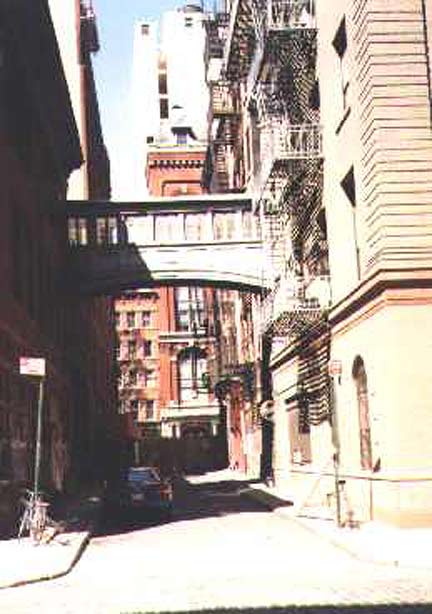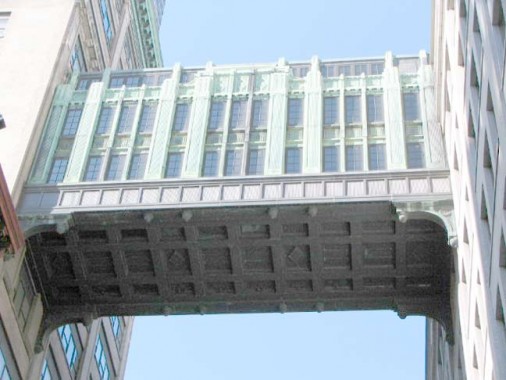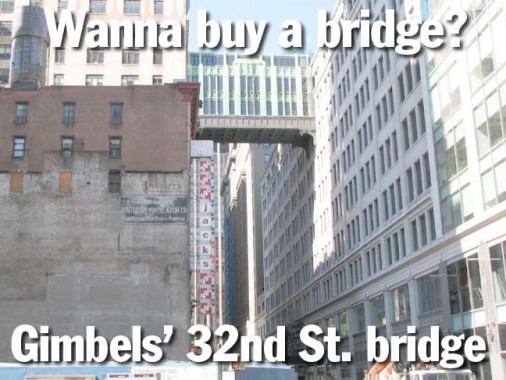I have always been a big fan of inter-building bridges, by which I mean bridges that connect two buildings without accessing the ground, even though I have not had the privilege of actually traversing any except one: it was a pedestrian bridge that connected the World Trade Center with the World Financial Center over West Street, and, of course, that one was destroyed by terrorism in 2001.
But I am not a fan of just any inter-building bridge. It has to be old, ornate, and look as though great thought has been put into its construction. There are only a few of those remaining around town.

One such bridge is in an unlikely location: a two-block long alley called Staple Street in Tribeca. It was built uncounted eons ago to connect what was then New York Hospital to an annex across the alley.
And, there is another one in midtown Manhattan. It’s so high up that you might not notice it if you are hustling to a train at Penn Station one block away.

This bridge over East 32nd Street between 6th and 7th Avenues can almost be called a small building in its own right– it’s 3 stories tall.

It has retained an almost Beaux Arts aura, even though it came along at the very beginnings of Art Deco. Possibly the two buildings it connects were more ornamented at one time.
Over 8 decades the copper cladding is magnificently greened and verdigris’ed.
Filigree and decoration like this would be deemed unnecessary, ostentatious and needlessly expensive in ensuing decades. Since 1925, when the overpass was built, inter-building bridges have gotten ever more utilitarian and boring.
But, when Gimbels’ Department Store, Macy’s great rival, decided to bridge West 32nd Street at its 6th Avenue flagship, they hired the Shreve and Lamb architectural firm. A few years later, the same firm designed the Empire State, the King of All Buildings.
I still don’t know what it looks like inside the bridge itself, but it must be something special.
Update 6/18/14: Wonder no more…the Bowery Boys have photos from the inside.
8/28/12
